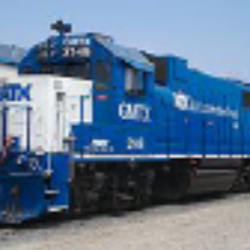URI

United Rentals, Inc.
URI
(2.0)697,48 USD
12.72% ROA
30.99% ROE
20.79x PER
52.889.540.589,00 USD
155.65% DER
0.8% Yield
17.13% NPM
United Rentals, Inc. Stock Analysis
United Rentals, Inc. Fundamental Analysis
Fundamental analysis in stock investing is like studying the foundation of a house before buying it. It involves looking at a company's financial health, like its earnings, assets, and debts, to determine if it's a good investment based on its fundamental strength and potential for growth.
| # | Analysis | Rating |
|---|---|---|
| 1 |
ROE
ROE surpassing expectations (32.48%) highlights strong profitability and efficient use of shareholders' equity, making it an appealing investment prospect. |
|
| 2 |
ROA
The stock's ability to make a lot of money from its assets shows that it is very profitable, making it a good choice for people who want to invest and make a lot of money. |
|
| 3 |
Revenue Growth
This company's revenue has shown remarkable growth over the past three years, making it an excellent choice for seeking a consistently prosperous investment. |
|
| 4 |
Net Profit Growth
Over the last three years, this company has consistently achieved net profit growth, indicating a favorable financial performance and making it an attractive investment option. |
|
| 5 |
Assets Growth
Company's revenue has experienced consistent growth over the last three years, indicating a favorable financial trajectory and making it an attractive investment choice. |
|
| 6 |
Buffet Intrinsic Value
Warren Buffett's formula suggests that the company's stock is undervalued (3.719), making it an appealing investment prospect with its intrinsic value surpassing the current market price. |
|
| 7 |
PBV
The stock's high Price-to-Book Value (P/BV) ratio (4.23x) suggests it's overvalued, potentially making it an expensive investment. |
|
| 8 |
DER
The company has a high debt to equity ratio (167%), which means it owes a lot of money compared to what it actually owns, making it financially risky. |
|
| 9 |
Graham Number
The Graham number calculation reveals that this company's stock price is potentially inflated, implying that it may not be a desirable investment option. |
|
| 10 |
Dividend Growth
Potential investors should be aware that the company's dividend growth has shown no upward trend in the past three years, indicating limited potential for increased returns. |
|
| 11 |
Dividend
No dividends from the company in the past three years raises doubts about its profitability for shareholders. |
United Rentals, Inc. Technical Analysis
Technical analysis in stock investing is like reading the patterns on a weather map to predict future weather conditions. It involves studying past stock price movements and trading volumes to make predictions about where a stock's price might go next, without necessarily looking at the company's financial health.
| # | Analysis | Recommendation |
|---|---|---|
| 1 | Awesome Oscillator | Buy |
| 2 | MACD | Buy |
| 3 | RSI | Hold |
| 4 | Stoch RSI | Sell |
United Rentals, Inc. Price Chart
Financial Statements
Financial statements are like report cards for companies. They show how much money a company makes (income statement), what it owns and owes (balance sheet), and where it spends its money (cash flow statement), helping stock investors understand if a company is healthy and worth investing in.
Income Statements
An income statement for a company is like a scoreboard for its profits and losses. It shows how much money the company made (revenue) and how much it spent to make that money (expenses), helping stock investors see if a company is making a profit or not.
Revenue in stock investing is the total amount of money a company earns from its sales, and it's a key factor that investors consider to assess a company's financial performance and growth potential.
| Year | Revenue | Growth |
|---|---|---|
| 1998 | 1.220.300.000 | |
| 1999 | 2.233.600.000 | 45.37% |
| 2000 | 2.918.861.000 | 23.48% |
| 2001 | 2.886.605.000 | -1.12% |
| 2002 | 2.820.989.000 | -2.33% |
| 2003 | 2.867.236.000 | 1.61% |
| 2004 | 3.094.000.000 | 7.33% |
| 2005 | 3.563.000.000 | 13.16% |
| 2006 | 3.640.000.000 | 2.12% |
| 2007 | 3.731.000.000 | 2.44% |
| 2008 | 3.267.000.000 | -14.2% |
| 2009 | 2.358.000.000 | -38.55% |
| 2010 | 2.237.000.000 | -5.41% |
| 2011 | 2.611.000.000 | 14.32% |
| 2012 | 4.117.000.000 | 36.58% |
| 2013 | 4.955.000.000 | 16.91% |
| 2014 | 5.685.000.000 | 12.84% |
| 2015 | 5.817.000.000 | 2.27% |
| 2016 | 5.762.000.000 | -0.95% |
| 2017 | 6.641.000.000 | 13.24% |
| 2018 | 8.047.000.000 | 17.47% |
| 2019 | 9.351.000.000 | 13.95% |
| 2020 | 8.530.000.000 | -9.62% |
| 2021 | 9.716.000.000 | 12.21% |
| 2022 | 11.642.000.000 | 16.54% |
| 2023 | 15.060.000.000 | 22.7% |
| 2023 | 14.332.000.000 | -5.08% |
| 2024 | 15.092.000.000 | 5.04% |
Research and Development Expenses are the costs a company incurs to create and improve its products or services, which can be important for investors to evaluate a company's innovation and potential for future growth.
| Year | Research and Development Expenses | Growth |
|---|---|---|
| 1998 | 0 | |
| 1999 | 0 | 0% |
| 2000 | 0 | 0% |
| 2001 | 0 | 0% |
| 2002 | 0 | 0% |
| 2003 | 0 | 0% |
| 2004 | 0 | 0% |
| 2005 | 0 | 0% |
| 2006 | 0 | 0% |
| 2007 | 0 | 0% |
| 2008 | 0 | 0% |
| 2009 | 0 | 0% |
| 2010 | 0 | 0% |
| 2011 | 0 | 0% |
| 2012 | 0 | 0% |
| 2013 | 0 | 0% |
| 2014 | 0 | 0% |
| 2015 | 0 | 0% |
| 2016 | 0 | 0% |
| 2017 | 0 | 0% |
| 2018 | 0 | 0% |
| 2019 | 0 | 0% |
| 2020 | 0 | 0% |
| 2021 | 0 | 0% |
| 2022 | 0 | 0% |
| 2023 | 0 | 0% |
| 2023 | 0 | 0% |
| 2024 | 0 | 0% |
General and Administrative Expenses are the costs a company incurs to run its day-to-day operations, such as office rent, salaries, and utilities, which investors consider to understand a company's overall efficiency and management effectiveness.
| Year | General and Administrative Expenses | Growth |
|---|---|---|
| 1998 | 0 | |
| 1999 | 352.600.000 | 100% |
| 2000 | 454.330.000 | 22.39% |
| 2001 | 441.751.000 | -2.85% |
| 2002 | 438.918.000 | -0.65% |
| 2003 | 451.347.000 | 2.75% |
| 2004 | 497.000.000 | 9.19% |
| 2005 | 596.000.000 | 16.61% |
| 2006 | 613.000.000 | 2.77% |
| 2007 | 595.000.000 | -3.03% |
| 2008 | 528.000.000 | -12.69% |
| 2009 | 408.000.000 | -29.41% |
| 2010 | 367.000.000 | -11.17% |
| 2011 | 407.000.000 | 9.83% |
| 2012 | 588.000.000 | 30.78% |
| 2013 | 642.000.000 | 8.41% |
| 2014 | 758.000.000 | 15.3% |
| 2015 | 714.000.000 | -6.16% |
| 2016 | 719.000.000 | 0.7% |
| 2017 | 903.000.000 | 20.38% |
| 2018 | 0 | 0% |
| 2019 | 0 | 0% |
| 2020 | 0 | 0% |
| 2021 | 0 | 0% |
| 2022 | 0 | 0% |
| 2023 | 0 | 0% |
| 2023 | 0 | 0% |
| 2024 | 0 | 0% |
EBITDA stands for Earnings Before Interest, Taxes, Depreciation, and Amortization. It is a measure that helps stock investors analyze a company's profitability by looking at its earnings without considering certain expenses. This helps to get a clearer picture of the company's financial performance and its ability to generate cash flow.
| Year | EBITDA | Growth |
|---|---|---|
| 1998 | 405.100.000 | |
| 1999 | 752.964.000 | 46.2% |
| 2000 | 962.371.000 | 21.76% |
| 2001 | 924.858.000 | -4.06% |
| 2002 | 844.000.000 | -9.58% |
| 2003 | 724.000.000 | -16.57% |
| 2004 | 910.000.000 | 20.44% |
| 2005 | 956.000.000 | 4.81% |
| 2006 | 1.129.000.000 | 15.32% |
| 2007 | 1.262.000.000 | 10.54% |
| 2008 | -117.000.000 | 1178.63% |
| 2009 | 619.000.000 | 118.9% |
| 2010 | 649.000.000 | 4.62% |
| 2011 | 875.000.000 | 25.83% |
| 2012 | 1.501.000.000 | 41.71% |
| 2013 | 2.181.000.000 | 31.18% |
| 2014 | 1.678.000.000 | -29.98% |
| 2015 | 2.653.000.000 | 36.75% |
| 2016 | 2.566.000.000 | -3.39% |
| 2017 | 2.843.000.000 | 9.74% |
| 2018 | 3.628.000.000 | 21.64% |
| 2019 | 4.200.000.000 | 13.62% |
| 2020 | 2.195.000.000 | -91.34% |
| 2021 | 2.642.000.000 | 16.92% |
| 2022 | 5.464.000.000 | 51.65% |
| 2023 | 7.224.000.000 | 24.36% |
| 2023 | 6.627.000.000 | -9.01% |
| 2024 | 6.888.000.000 | 3.79% |
Gross profit is the money a company makes from selling its products or services after subtracting the cost of producing or providing them, and it is an important measure for investors to understand a company's profitability.
| Year | Gross Profit | Growth |
|---|---|---|
| 1998 | 600.700.000 | |
| 1999 | 1.105.500.000 | 45.66% |
| 2000 | 1.416.701.000 | 21.97% |
| 2001 | 1.039.470.000 | -36.29% |
| 2002 | 1.211.825.000 | 14.22% |
| 2003 | 1.180.578.000 | -2.65% |
| 2004 | 1.337.000.000 | 11.7% |
| 2005 | 1.550.000.000 | 13.74% |
| 2006 | 1.289.000.000 | -20.25% |
| 2007 | 1.308.000.000 | 1.45% |
| 2008 | 1.103.000.000 | -18.59% |
| 2009 | 610.000.000 | -80.82% |
| 2010 | 658.000.000 | 7.29% |
| 2011 | 898.000.000 | 26.73% |
| 2012 | 1.587.000.000 | 43.42% |
| 2013 | 1.987.000.000 | 20.13% |
| 2014 | 2.432.000.000 | 18.3% |
| 2015 | 2.480.000.000 | 1.94% |
| 2016 | 2.403.000.000 | -3.2% |
| 2017 | 2.769.000.000 | 13.22% |
| 2018 | 3.364.000.000 | 17.69% |
| 2019 | 3.670.000.000 | 8.34% |
| 2020 | 3.183.000.000 | -15.3% |
| 2021 | 3.853.000.000 | 17.39% |
| 2022 | 4.996.000.000 | 22.88% |
| 2023 | 6.340.000.000 | 21.2% |
| 2023 | 5.813.000.000 | -9.07% |
| 2024 | 5.636.000.000 | -3.14% |
Net income in stock investing is like the money a company actually gets to keep as profit after paying all its bills, and it's an important measure to understand how well a company is doing financially.
| Year | Net Profit | Growth |
|---|---|---|
| 1998 | 13.500.000 | |
| 1999 | 142.700.000 | 90.54% |
| 2000 | 176.375.000 | 19.09% |
| 2001 | 111.256.000 | -58.53% |
| 2002 | -397.825.000 | 127.97% |
| 2003 | -244.310.000 | -62.84% |
| 2004 | -84.000.000 | -190.85% |
| 2005 | 187.000.000 | 144.92% |
| 2006 | 224.000.000 | 16.52% |
| 2007 | 362.000.000 | 38.12% |
| 2008 | -704.000.000 | 151.42% |
| 2009 | -62.000.000 | -1035.48% |
| 2010 | -26.000.000 | -138.46% |
| 2011 | 101.000.000 | 125.74% |
| 2012 | 75.000.000 | -34.67% |
| 2013 | 387.000.000 | 80.62% |
| 2014 | 540.000.000 | 28.33% |
| 2015 | 585.000.000 | 7.69% |
| 2016 | 566.000.000 | -3.36% |
| 2017 | 1.346.000.000 | 57.95% |
| 2018 | 1.096.000.000 | -22.81% |
| 2019 | 1.174.000.000 | 6.64% |
| 2020 | 890.000.000 | -31.91% |
| 2021 | 1.386.000.000 | 35.79% |
| 2022 | 2.105.000.000 | 34.16% |
| 2023 | 2.812.000.000 | 25.14% |
| 2023 | 2.424.000.000 | -16.01% |
| 2024 | 2.544.000.000 | 4.72% |
EPS, or earnings per share, is a measure that shows how much profit a company has earned for each outstanding share of its stock, and it is important for stock investors as it helps understand the profitability of a company and compare it with other companies in the market.
| Year | Earning per Share (EPS) | Growth |
|---|---|---|
| 1998 | 0 | |
| 1999 | 2 | 100% |
| 2000 | 2 | 0% |
| 2001 | 2 | -100% |
| 2002 | -5 | 125% |
| 2003 | -3 | -33.33% |
| 2004 | -1 | 0% |
| 2005 | 2 | 100% |
| 2006 | 2 | 50% |
| 2007 | 4 | 33.33% |
| 2008 | -9 | 133.33% |
| 2009 | -1 | -800% |
| 2010 | 0 | 0% |
| 2011 | 2 | 100% |
| 2012 | 1 | 0% |
| 2013 | 4 | 100% |
| 2014 | 6 | 20% |
| 2015 | 6 | 16.67% |
| 2016 | 6 | 0% |
| 2017 | 16 | 60% |
| 2018 | 13 | -15.38% |
| 2019 | 15 | 13.33% |
| 2020 | 12 | -25% |
| 2021 | 19 | 36.84% |
| 2022 | 30 | 34.48% |
| 2023 | 41 | 29.27% |
| 2023 | 35 | -17.14% |
| 2024 | 38 | 7.89% |
Cashflow Statements
Cashflow statements show the movement of money in and out of a company, helping stock investors understand how much money a company makes and spends. By examining cashflow statements, investors can assess if a company is generating enough cash to pay its bills, invest in growth, and provide returns to stockholders.
Free cash flow is the leftover cash that a company generates after covering its operating expenses and capital expenditures, which is important for stock investors as it shows how much money a company has available to invest in growth, pay dividends, or reduce debt.
| Year | Free Cashflow | Growth |
|---|---|---|
| 1998 | -1.259.800.000 | |
| 1999 | -1.407.200.000 | 10.47% |
| 2000 | -449.253.000 | -213.23% |
| 2001 | 199.392.000 | 325.31% |
| 2002 | -12.949.000 | 1639.83% |
| 2003 | -370.995.000 | 96.51% |
| 2004 | -14.000.000 | -2549.96% |
| 2005 | -220.000.000 | 93.64% |
| 2006 | -107.000.000 | -105.61% |
| 2007 | -122.000.000 | 12.3% |
| 2008 | 60.000.000 | 303.33% |
| 2009 | 127.000.000 | 52.76% |
| 2010 | 78.000.000 | -62.82% |
| 2011 | -202.000.000 | 138.61% |
| 2012 | -648.000.000 | 68.83% |
| 2013 | -133.000.000 | -387.22% |
| 2014 | -20.000.000 | -565% |
| 2015 | 359.000.000 | 105.57% |
| 2016 | 614.000.000 | 41.53% |
| 2017 | 341.000.000 | -80.06% |
| 2018 | 562.000.000 | 39.32% |
| 2019 | 674.000.000 | 16.62% |
| 2020 | 1.500.000.000 | 55.07% |
| 2021 | 491.000.000 | -205.5% |
| 2022 | 743.000.000 | 33.92% |
| 2023 | -56.000.000 | 1426.79% |
| 2023 | 634.000.000 | 108.83% |
| 2024 | -197.000.000 | 421.83% |
Operating cash flow represents the cash generated or consumed by a company's day-to-day operations, excluding external investing or financing activities, and is crucial for stock investors as it shows how much cash a company is generating from its core business operations.
| Year | Operating Cashflow | Growth |
|---|---|---|
| 1998 | 216.100.000 | |
| 1999 | 421.400.000 | 48.72% |
| 2000 | 512.721.000 | 17.81% |
| 2001 | 696.710.000 | 26.41% |
| 2002 | 517.909.000 | -34.52% |
| 2003 | 342.306.000 | -51.3% |
| 2004 | 737.000.000 | 53.55% |
| 2005 | 643.000.000 | -14.62% |
| 2006 | 858.000.000 | 25.06% |
| 2007 | 868.000.000 | 1.15% |
| 2008 | 764.000.000 | -13.61% |
| 2009 | 438.000.000 | -74.43% |
| 2010 | 452.000.000 | 3.1% |
| 2011 | 608.000.000 | 25.66% |
| 2012 | 721.000.000 | 15.67% |
| 2013 | 1.551.000.000 | 53.51% |
| 2014 | 1.801.000.000 | 13.88% |
| 2015 | 1.995.000.000 | 9.72% |
| 2016 | 1.953.000.000 | -2.15% |
| 2017 | 2.230.000.000 | 12.42% |
| 2018 | 2.853.000.000 | 21.84% |
| 2019 | 3.024.000.000 | 5.65% |
| 2020 | 2.658.000.000 | -13.77% |
| 2021 | 3.689.000.000 | 27.95% |
| 2022 | 4.433.000.000 | 16.78% |
| 2023 | 1.062.000.000 | -317.42% |
| 2023 | 4.704.000.000 | 77.42% |
| 2024 | 1.265.000.000 | -271.86% |
Capex, short for capital expenditures, refers to the money a company spends on acquiring or upgrading tangible assets like buildings, equipment, or technology, which is important for stock investors as it indicates how much a company is investing in its infrastructure to support future growth and profitability.
| Year | Capital Expenditure | Growth |
|---|---|---|
| 1998 | 1.475.900.000 | |
| 1999 | 1.828.600.000 | 19.29% |
| 2000 | 961.974.000 | -90.09% |
| 2001 | 497.318.000 | -93.43% |
| 2002 | 530.858.000 | 6.32% |
| 2003 | 713.301.000 | 25.58% |
| 2004 | 751.000.000 | 5.02% |
| 2005 | 863.000.000 | 12.98% |
| 2006 | 965.000.000 | 10.57% |
| 2007 | 990.000.000 | 2.53% |
| 2008 | 704.000.000 | -40.63% |
| 2009 | 311.000.000 | -126.37% |
| 2010 | 374.000.000 | 16.84% |
| 2011 | 810.000.000 | 53.83% |
| 2012 | 1.369.000.000 | 40.83% |
| 2013 | 1.684.000.000 | 18.71% |
| 2014 | 1.821.000.000 | 7.52% |
| 2015 | 1.636.000.000 | -11.31% |
| 2016 | 1.339.000.000 | -22.18% |
| 2017 | 1.889.000.000 | 29.12% |
| 2018 | 2.291.000.000 | 17.55% |
| 2019 | 2.350.000.000 | 2.51% |
| 2020 | 1.158.000.000 | -102.94% |
| 2021 | 3.198.000.000 | 63.79% |
| 2022 | 3.690.000.000 | 13.33% |
| 2023 | 1.118.000.000 | -230.05% |
| 2023 | 4.070.000.000 | 72.53% |
| 2024 | 1.462.000.000 | -178.39% |
Balance Sheet
Balance sheets provide a snapshot of a company's financial health and its assets (such as cash, inventory, and property) and liabilities (like debts and obligations) at a specific point in time. For stock investors, balance sheets help assess the company's overall worth and evaluate its ability to meet financial obligations and support future growth.
Equity refers to the ownership interest or stake that shareholders have in a company, representing their claim on its assets and earnings after all debts and liabilities are paid.
| Year | Equity | Growth |
|---|---|---|
| 1998 | 1.026.200.000 | |
| 1999 | 1.697.500.000 | 39.55% |
| 2000 | 1.845.943.000 | 8.04% |
| 2001 | 1.898.431.000 | 2.76% |
| 2002 | 1.331.505.000 | -42.58% |
| 2003 | 1.140.875.000 | -16.71% |
| 2004 | 1.026.000.000 | -11.2% |
| 2005 | 1.229.000.000 | 16.52% |
| 2006 | 1.538.000.000 | 20.09% |
| 2007 | 2.018.000.000 | 23.79% |
| 2008 | -29.000.000 | 7058.62% |
| 2009 | -19.000.000 | -52.63% |
| 2010 | -20.000.000 | 5% |
| 2011 | 64.000.000 | 131.25% |
| 2012 | 1.574.000.000 | 95.93% |
| 2013 | 1.848.000.000 | 14.83% |
| 2014 | 1.798.000.000 | -2.78% |
| 2015 | 1.476.000.000 | -21.82% |
| 2016 | 1.648.000.000 | 10.44% |
| 2017 | 3.106.000.000 | 46.94% |
| 2018 | 3.403.000.000 | 8.73% |
| 2019 | 3.830.000.000 | 11.15% |
| 2020 | 4.545.000.000 | 15.73% |
| 2021 | 5.991.000.000 | 24.14% |
| 2022 | 7.062.000.000 | 15.17% |
| 2023 | 7.756.000.000 | 8.95% |
| 2023 | 8.130.000.000 | 4.6% |
| 2024 | 8.281.000.000 | 1.82% |
Assets represent the valuable resources that a company owns, such as cash, inventory, property, and equipment, and understanding a company's assets helps investors assess its value and potential for generating future profits.
| Year | Assets | Growth |
|---|---|---|
| 1998 | 2.634.700.000 | |
| 1999 | 4.497.700.000 | 41.42% |
| 2000 | 5.123.933.000 | 12.22% |
| 2001 | 5.025.904.000 | -1.95% |
| 2002 | 4.690.557.000 | -7.15% |
| 2003 | 4.722.141.000 | 0.67% |
| 2004 | 4.882.000.000 | 3.27% |
| 2005 | 5.274.000.000 | 7.43% |
| 2006 | 5.366.000.000 | 1.71% |
| 2007 | 5.842.000.000 | 8.15% |
| 2008 | 4.191.000.000 | -39.39% |
| 2009 | 3.859.000.000 | -8.6% |
| 2010 | 3.693.000.000 | -4.49% |
| 2011 | 4.143.000.000 | 10.86% |
| 2012 | 11.026.000.000 | 62.43% |
| 2013 | 11.231.000.000 | 1.83% |
| 2014 | 12.467.000.000 | 9.91% |
| 2015 | 12.083.000.000 | -3.18% |
| 2016 | 11.988.000.000 | -0.79% |
| 2017 | 15.030.000.000 | 20.24% |
| 2018 | 18.133.000.000 | 17.11% |
| 2019 | 18.970.000.000 | 4.41% |
| 2020 | 17.868.000.000 | -6.17% |
| 2021 | 20.292.000.000 | 11.95% |
| 2022 | 24.183.000.000 | 16.09% |
| 2023 | 25.832.000.000 | 6.38% |
| 2023 | 25.589.000.000 | -0.95% |
| 2024 | 27.613.000.000 | 7.33% |
Liabilities refer to the financial obligations or debts that a company owes to creditors or external parties, and understanding a company's liabilities is important for investors as it helps assess the company's financial risk and ability to meet its obligations.
| Year | Liabilities | Growth |
|---|---|---|
| 1998 | 1.608.500.000 | |
| 1999 | 2.800.200.000 | 42.56% |
| 2000 | 3.277.990.000 | 14.58% |
| 2001 | 3.127.473.000 | -4.81% |
| 2002 | 3.359.052.000 | 6.89% |
| 2003 | 3.581.266.000 | 6.2% |
| 2004 | 3.856.000.000 | 7.12% |
| 2005 | 4.045.000.000 | 4.67% |
| 2006 | 3.828.000.000 | -5.67% |
| 2007 | 3.824.000.000 | -0.1% |
| 2008 | 4.220.000.000 | 9.38% |
| 2009 | 3.878.000.000 | -8.82% |
| 2010 | 3.713.000.000 | -4.44% |
| 2011 | 4.079.000.000 | 8.97% |
| 2012 | 9.452.000.000 | 56.85% |
| 2013 | 9.383.000.000 | -0.74% |
| 2014 | 10.669.000.000 | 12.05% |
| 2015 | 10.607.000.000 | -0.58% |
| 2016 | 10.340.000.000 | -2.58% |
| 2017 | 11.924.000.000 | 13.28% |
| 2018 | 14.730.000.000 | 19.05% |
| 2019 | 15.140.000.000 | 2.71% |
| 2020 | 13.323.000.000 | -13.64% |
| 2021 | 14.301.000.000 | 6.84% |
| 2022 | 17.121.000.000 | 16.47% |
| 2023 | 18.076.000.000 | 5.28% |
| 2023 | 17.459.000.000 | -3.53% |
| 2024 | 19.332.000.000 | 9.69% |
United Rentals, Inc. Financial Ratio (TTM)
Valuation Metrics
- Revenue per Share
- 221.61
- Net Income per Share
- 38.46
- Price to Earning Ratio
- 20.79x
- Price To Sales Ratio
- 3.59x
- POCF Ratio
- 11.16
- PFCF Ratio
- 59.03
- Price to Book Ratio
- 6.43
- EV to Sales
- 4.49
- EV Over EBITDA
- 9.71
- EV to Operating CashFlow
- 13.9
- EV to FreeCashFlow
- 74
- Earnings Yield
- 0.05
- FreeCashFlow Yield
- 0.02
- Market Cap
- 52,89 Bil.
- Enterprise Value
- 66,30 Bil.
- Graham Number
- 328.11
- Graham NetNet
- -256.31
Income Statement Metrics
- Net Income per Share
- 38.46
- Income Quality
- 1.86
- ROE
- 0.32
- Return On Assets
- 0.09
- Return On Capital Employed
- 0.17
- Net Income per EBT
- 0.76
- EBT Per Ebit
- 0.84
- Ebit per Revenue
- 0.27
- Effective Tax Rate
- 0.24
Margins
- Sales, General, & Administrative to Revenue
- 0
- Research & Developement to Revenue
- 0
- Stock Based Compensation to Revenue
- 0.01
- Gross Profit Margin
- 0.39
- Operating Profit Margin
- 0.27
- Pretax Profit Margin
- 0.23
- Net Profit Margin
- 0.17
Dividends
- Dividend Yield
- 0.01
- Dividend Yield %
- 0.8
- Payout Ratio
- 0.16
- Dividend Per Share
- 6.37
Operating Metrics
- Operating Cashflow per Share
- 71.66
- Free CashFlow per Share
- 13.46
- Capex to Operating CashFlow
- 0.81
- Capex to Revenue
- 0.26
- Capex to Depreciation
- 1.39
- Return on Invested Capital
- 0.14
- Return on Tangible Assets
- 0.13
- Days Sales Outstanding
- 55.92
- Days Payables Outstanding
- 55
- Days of Inventory on Hand
- 8.93
- Receivables Turnover
- 6.53
- Payables Turnover
- 6.64
- Inventory Turnover
- 40.88
- Capex per Share
- 58.2
Balance Sheet
- Cash per Share
- 7,02
- Book Value per Share
- 124,41
- Tangible Book Value per Share
- 11.84
- Shareholders Equity per Share
- 124.41
- Interest Debt per Share
- 203.51
- Debt to Equity
- 1.56
- Debt to Assets
- 0.47
- Net Debt to EBITDA
- 1.96
- Current Ratio
- 0.81
- Tangible Asset Value
- 0,79 Bil.
- Net Current Asset Value
- -16,11 Bil.
- Invested Capital
- 23597000000
- Working Capital
- -0,75 Bil.
- Intangibles to Total Assets
- 0.27
- Average Receivables
- 2,24 Bil.
- Average Payables
- 1,15 Bil.
- Average Inventory
- 213500000
- Debt to Market Cap
- 0.24
Dividends
Dividends in stock investing are like rewards that companies give to their shareholders. They are a portion of the company's profits distributed to investors, typically in the form of cash payments, as a way for them to share in the company's success.
| Year | Dividends | Growth |
|---|---|---|
| 2023 | 6 | |
| 2024 | 5 | -25% |
United Rentals, Inc. Profile
About United Rentals, Inc.
United Rentals, Inc., through its subsidiaries, operates as an equipment rental company. It operates in two segments, General Rentals and Specialty. The General Rentals segment rents general construction and industrial equipment includes backhoes, skid-steer loaders, forklifts, earthmoving equipment, and material handling equipment; aerial work platforms, such as boom and scissor lifts; and general tools and light equipment comprising pressure washers, water pumps, and power tools for construction and industrial companies, manufacturers, utilities, municipalities, homeowners, and government entities. The specialty segment rents specialty construction products, including trench safety equipment consists of trench shields, aluminum hydraulic shoring systems, slide rails, crossing plates, construction lasers, and line testing equipment for underground work; power and heating, ventilating, and air conditioning equipment, such as portable diesel generators, electrical distribution equipment, and temperature control equipment; fluid solutions equipment for fluid containment, transfer, and treatment; and mobile storage equipment and modular office space. This segment serves construction companies involved in infrastructure projects, and municipalities and industrial companies. It also sells aerial lifts, reach forklifts, telehandlers, compressors, and generators; construction consumables, tools, small equipment, and safety supplies; and parts for equipment that is owned by its customers, as well as provides repair and maintenance services. The company sells used equipment through its sales force, brokers, website, directly to manufacturers, and at auctions. The company operates a network of 1,360 rental locations in the United States, Canada, Europe, Australia, and New Zealand. United Rentals, Inc. was incorporated in 1997 and is headquartered in Stamford, Connecticut.
- CEO
- Mr. Matthew J. Flannery
- Employee
- 26.300
- Address
-
100 First Stamford Place
Stamford, 06902
United Rentals, Inc. Executives & BODs
| # | Name | Age |
|---|---|---|
| 1 |
Mr. Robert N. Halsey Vice President of Marketing |
70 |
| 2 |
Mr. William Edward Grace Executive Vice President & Chief Financial Officer |
70 |
| 3 |
Mr. Craig Adam Pintoff J.D. Executive Vice President & Chief Administrative Officer |
70 |
| 4 |
Ms. Joli L. Gross J.D. Senior Vice President, Corporate Secretary and Chief Legal & Sustainability Officer |
70 |
| 5 |
Mr. Daniel T. Higgins Vice President & Chief Information Officer |
70 |
| 6 |
Mr. Kenneth B. Mettel Senior Vice President of Performance Analytics |
70 |
| 7 |
Mr. Michael D. Durand Executive Vice President & Chief Operating Officer |
70 |
| 8 |
Ms. Elizabeth Carolyn Grenfell Vice President of Investor Relations |
70 |
| 9 |
Mr. Matthew J. Flannery President, Chief Executive Officer & Director |
70 |
| 10 |
Mr. Andrew B. Limoges Vice President, Controller & Principal Accounting Officer |
70 |












